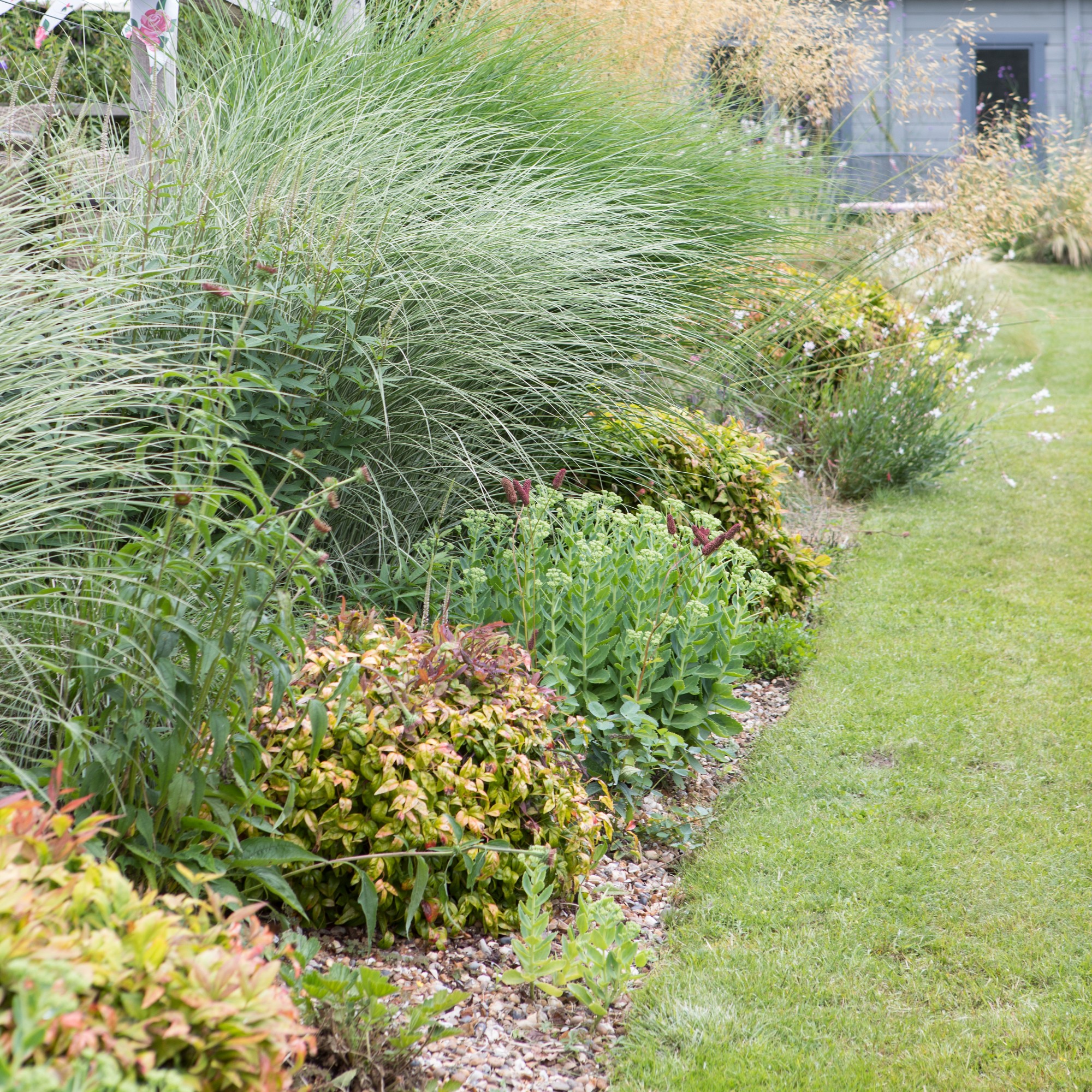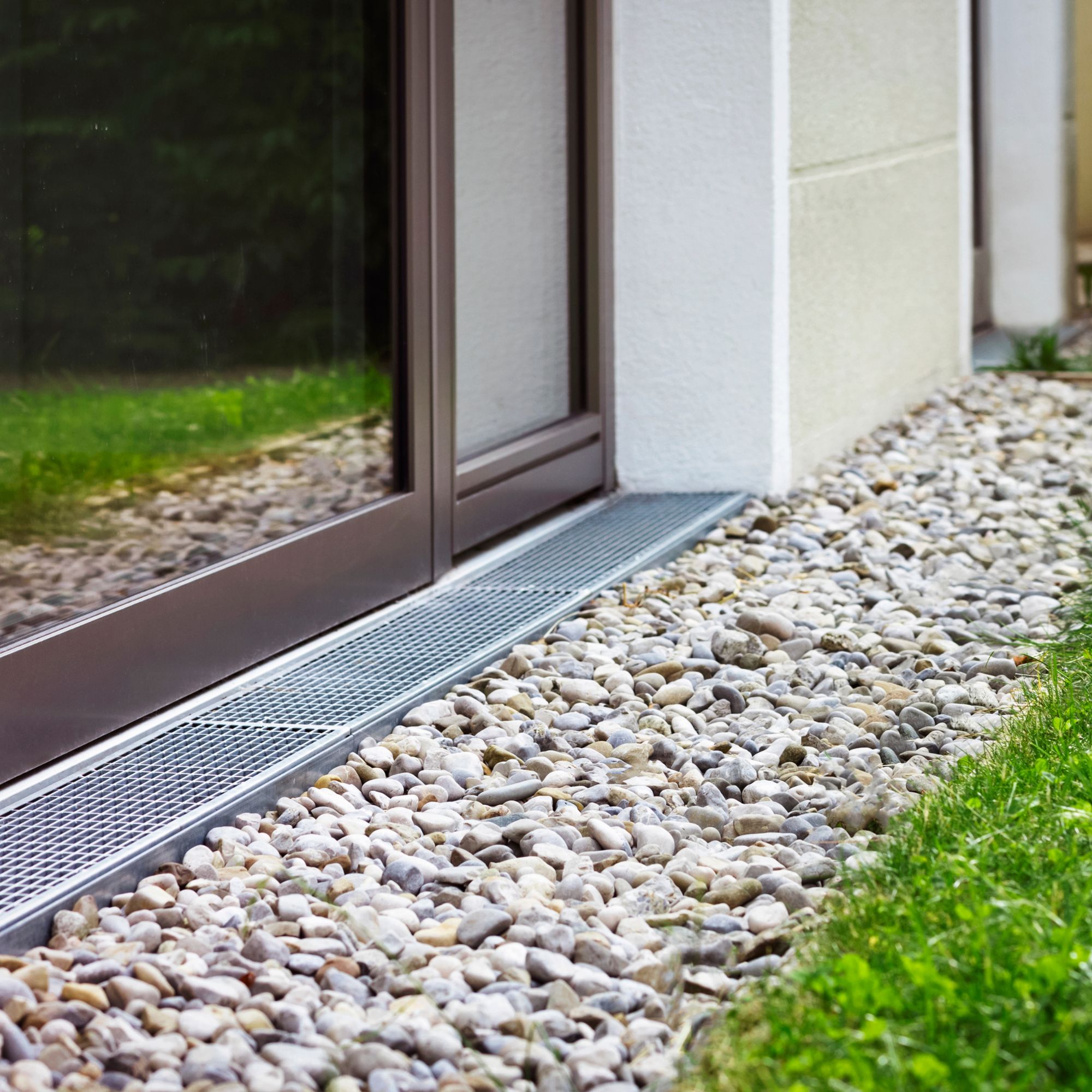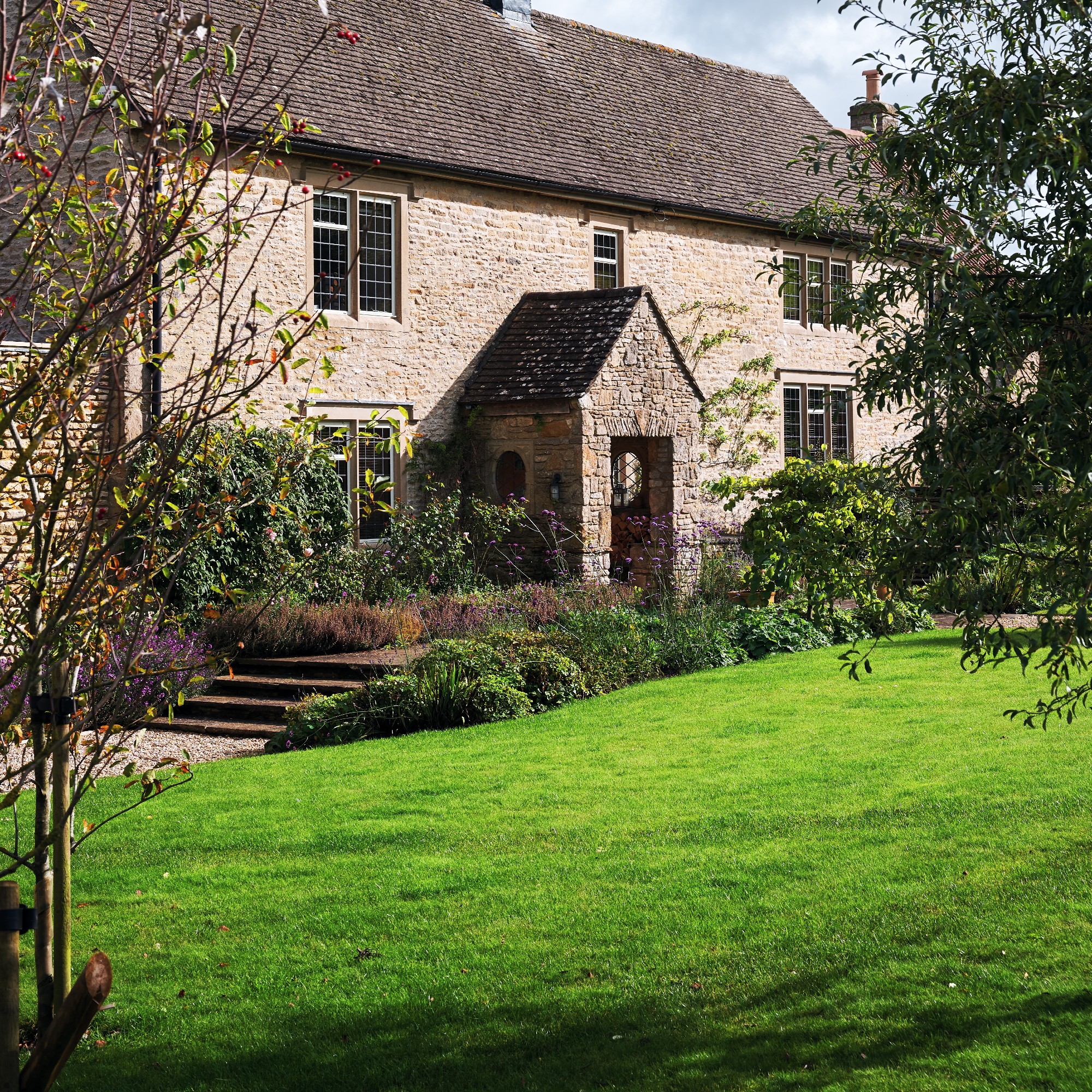A French drain could save your garden from flooding – here's how it works
Here's everything you need to know about French drains

Sophie King

EDITOR’S NOTE: An earlier version of this article included a quote from a purported expert whose credentials we have not been able to verify. The quote has been removed. We regret this lapse in our verification process and have updated our internal protocols to reduce the risk of recurrence.
French drains are often celebrated as effective flooding solutions, and they can even qualify as a DIY-friendly project if you fancy installing one yourself. What is a French drain, though?
Well, it's a brilliant way to improve drainage in a garden without breaking the bank. In a nutshell, a French drain is a gravel-filled trench that's often installed around the edges of a building or garden to redirect surface water.
To find out how a French drain works, we spoke to a few drainage experts. Below, you'll find an overview of what a French drain is, its benefits, and a few tips on installing one yourself, if you're keen.
How does a French drain work?
One of the best ways to floodproof your garden is to provide it with plenty of drainage, and a French drain is a go-to method for gardeners looking for an efficient system.
To find out what a French drain is, and how it works, we spoke to Drainage Central's managing director, Jess Thomas.
'A French drain is a trench that is filled with gravel that contains a perforated pipe that drains surface water and groundwater away to prevent it from pooling,' she explains.
French drains are usually sloped, allowing the water to flow away from areas that are generally prone to flooding. Instead, the water is directed to a more suitable area of the garden, like a soakaway.
Sign up to our newsletter for style inspiration, real homes, project and garden advice and shopping know-how

If you've found yourself struggling to fix a waterlogged lawn, it's worth getting a French drain installed ahead of future downpours. Prevention is better than cure, as they say!
'The aim of a French drain is to redirect surface water away from your property or garden,' says building and landscaping expert Mark Irving from Build & Plumb. 'They work by channelling surface water through the drainage gravel and into the perforated pipe, where the water is carried and redirected to a discharge point.'
In most cases, the trench is also lined with a membrane to prevent blockages from soil or sediment.
A French drain might be less effective in a flat garden, but if you're looking for sloping garden ideas, it's a brilliant drainage solution.
That’s because a French drain works by using gravity to its advantage, channelling the water down to an area of the garden that's less prone to waterlogging.
What does a French drain look like?

Now that we've established what a French drain is, you're probably wondering what one looks like.
Well, they can be as visible or hidden as you like. While a lot of French drains are marked by a signature gravel trail, there are ways to conceal them, too using turf or decorative gravel.
So, it's worth figuring out the best time to lay turf if you're thinking about installing a camouflaged French drain. One of the best times to install a French drain, coincidentally, is summer.
How do you install a French drain?
If your waterlogged lawn is crying out for an innovative drainage solution, you’ll be happy to know that you can install a French drain yourself. The process can be fiddly, though, so it’s best to set aside a weekend to dig the trench properly and ensure that the drain is in the right position.
First, you'll need to be strategic about positioning. It's best to plan your drainage path so that it gradually slopes away from the problem area.
'To effectively utilise French drains for your home, start by assessing the areas prone to water accumulation and determining the best direction for redirecting water flow,' advises Alex Ventress, property expert at The Property Buying Company.

A trench being dug for a french drain installation
Then, gather your perforated PVC or corrugated plastic pipe, gravel, landscape fabric and spade.
'Dig a trench along the planned route, adding a layer of gravel at the bottom to facilitate drainage,' continues Alex. 'Install the perforated pipe, wrapping it in landscape fabric, and backfill the trench with gravel. Compact it as you go, and cover it with soil until it's level with the surrounding ground.
'Optionally, incorporate catch basins or pop-up emitters for surface runoff. Test the drain by pouring water or waiting for rain, and maintain it regularly to prevent clogs.’

If you have a larger garden or your home is experiencing more serious waterlogging issues, it's best to call in professional help. You'll also need to double-check that you're allowed to install a French drain on your property.
‘It's essential to consider local building rules and regulations, seeking professional advice if the installation appears complex or if the drainage issues are severe,’ Alex warns. ‘Consulting with a landscaper or drainage specialist can ensure that your French drain is installed correctly and efficiently addresses your property's specific needs.’
What you'll need
- A spade, like the Spear & Jackson Neverbend Carbon Steel Digging Spade from Amazon
- A perforated PVC pipe, like the Perforated Land Drainage Piping Coil Pipe from Amazon
- Landscape fabric, like Verve Beds & Borders Landscaping Fabric from B&Q
- Gravel, like Westland's Garden Gravel from Amazon
- Catch basins (optional), like the DKIEI Square Catch Basin Drain Kit from Amazon
FAQs
What is the point of a French drain?
If you're keen to improve lawn drainage or resolve a waterlogging issue around your home, a French drain can be a huge help.
When your garden is exposed to heavy rainfall, the water seeps into the French drain, flowing down to another area of your garden instead.
The idea is to take water from an area of poor drainage to an area of sufficient drainage to prevent waterlogging.
What are the downsides of a French drain?
If you have a perfectly flat garden, a French drain is not the solution for you. In order to work properly, a French drain needs to be installed on a gradient. Even something as little as a 1% grade drop would work in its favour.
This is because French drains rely on gravity to pull down the excess water. If there’s no slope, the water will continue to pool, and you may struggle even more with waterlogged grass.
Also, if you decide to have a French drain installed professionally, it can be a costly job, depending on the size and difficulty of excavation. French drains can be prone to clogging, too, so you'll need to factor in long-term maintenance.
And that's that! A French drain is a brilliant way to improve your garden's drainage, and with a bit of DIY know-how, you can even install one yourself.

Lauren Bradbury has been the Content Editor for the House Manual section since January 2025 but worked with the team as a freelancer for a year and a half before that. She graduated with a Bachelor’s degree in English and Creative Writing from the University of Chichester in 2016. Then, she dipped her toe into the world of content writing, primarily focusing on home content. After years of agency work, she decided to take the plunge and become a full-time freelancer for online publications, including Real Homes and Ideal Home, before taking on this permanent role. Now, she spends her days searching for the best decluttering and cleaning hacks and creating handy how-to guides for homeowners and renters alike, as well as testing vacuums as part of her role as the Ideal Home Certified Expert in Training on Vacuums, having spent over 110 hours testing different vacuum models to date!
- Sophie KingGardens Editor